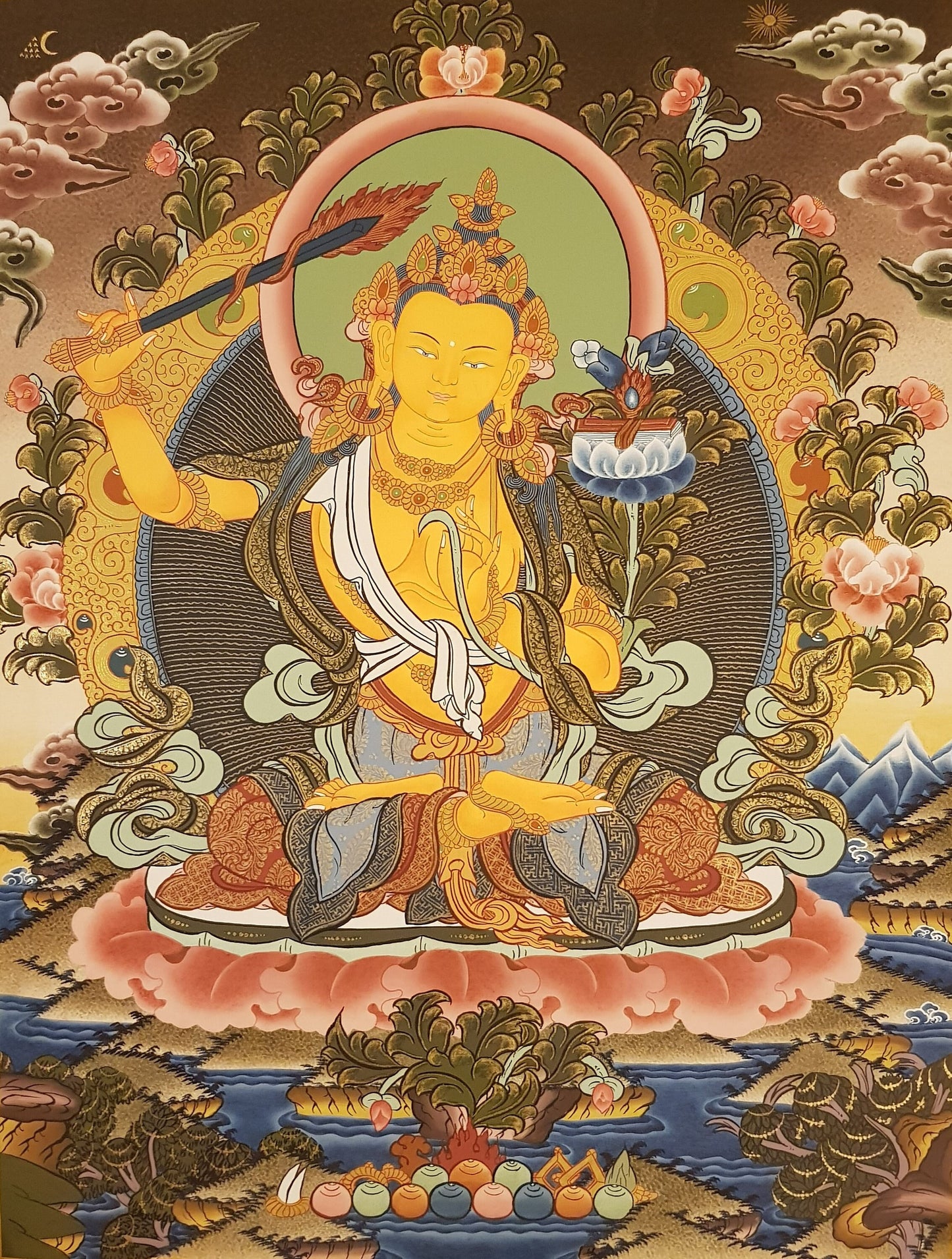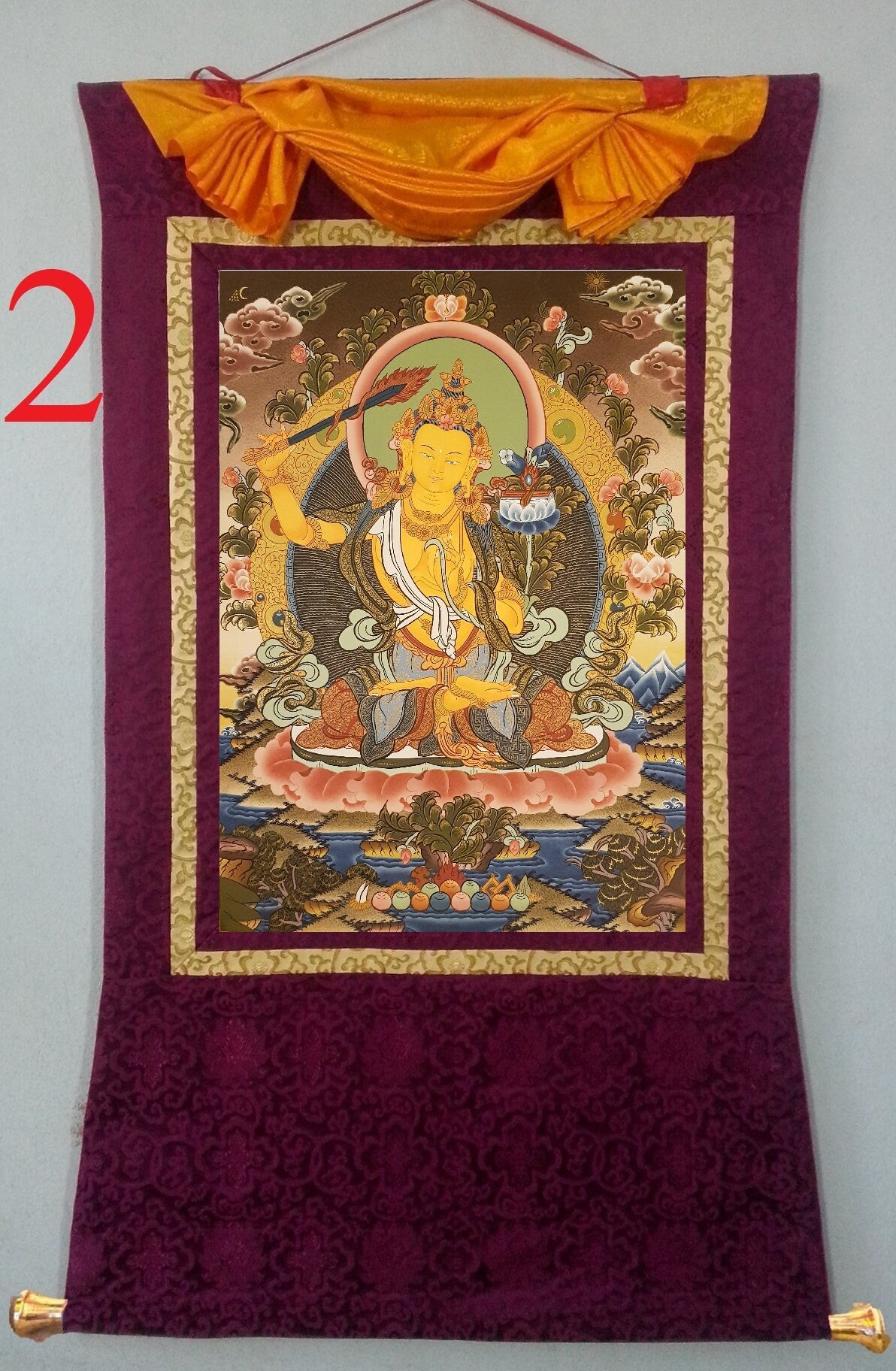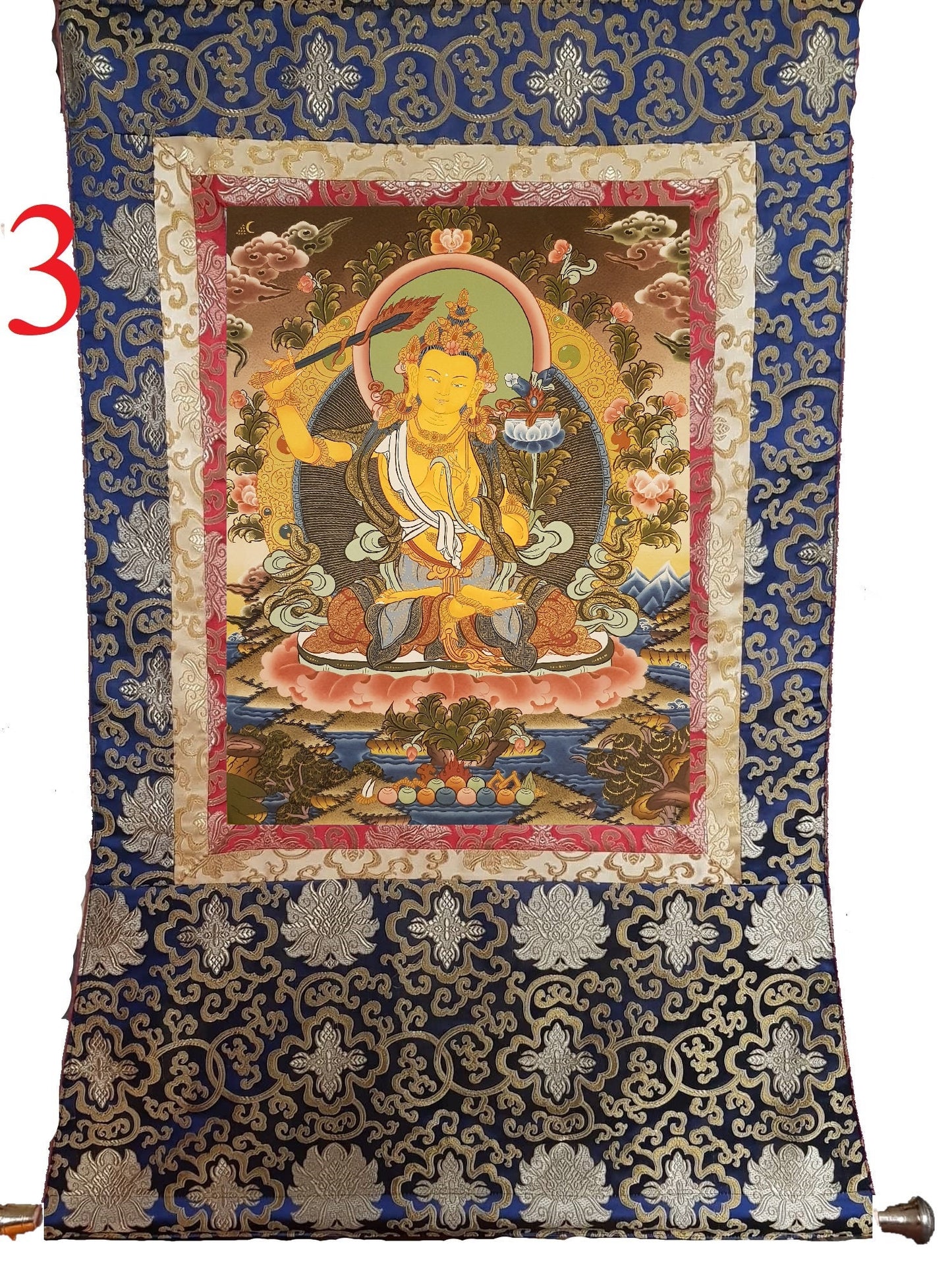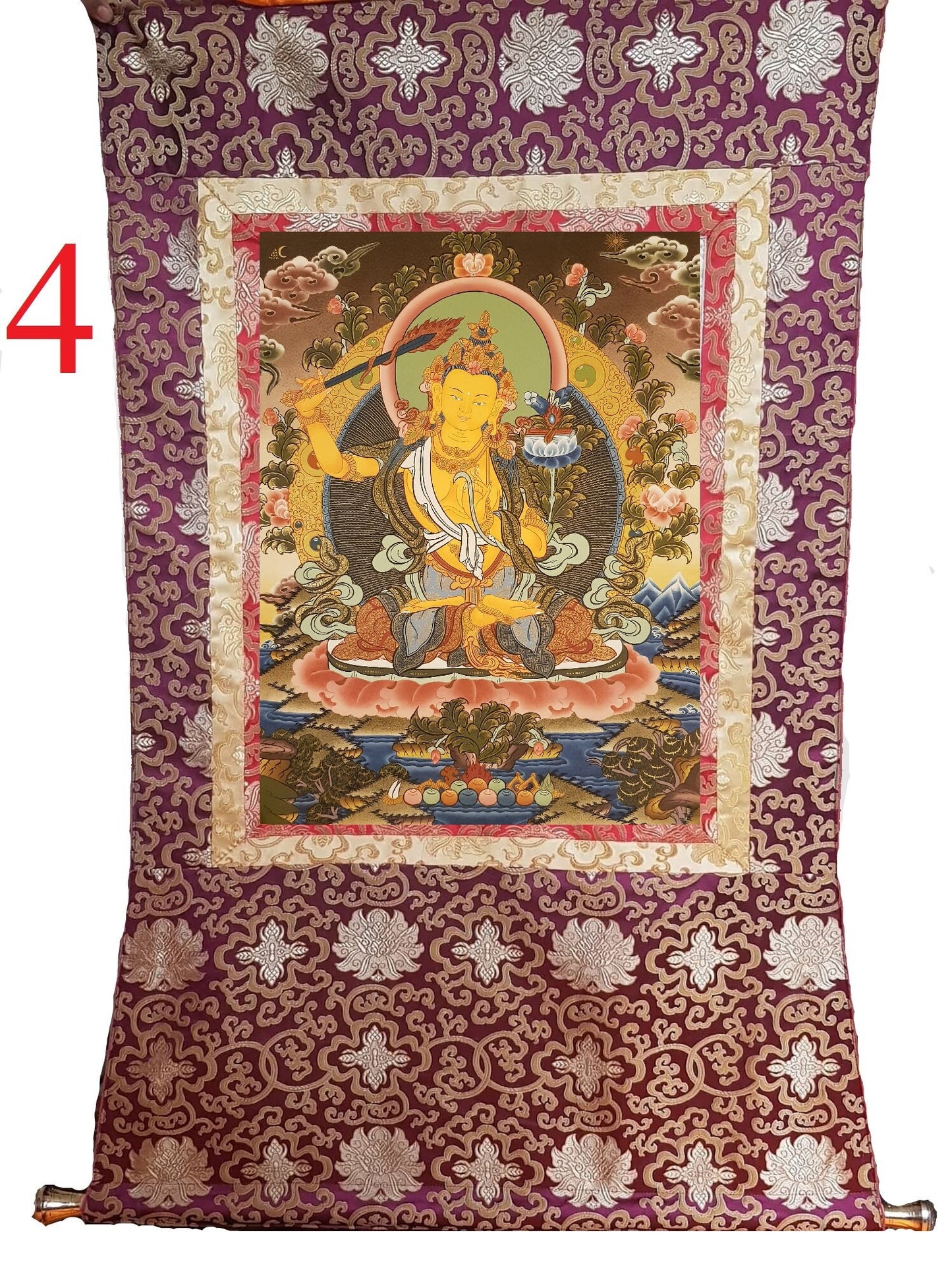1
/
of
6
My Store
79. Manjushree (Manjushri) Thangka (Thanka). Free Brocade / Free Shipping.
79. Manjushree (Manjushri) Thangka (Thanka). Free Brocade / Free Shipping.
Regular price
$365.00 USD
Regular price
Sale price
$365.00 USD
Quantity
Couldn't load pickup availability
Manjushree Thangka: Story of Manujushree
Manjushri the Bodhisattva of Wisdom, normally holds a sword in one hand, to cut off all delusion, and a Prajnaparamita Wisdom text in the other. Prajnaparamita (Perfection of Wisdom) texts, are said to be the closest Buddhists ever got to putting truth (impossible task) into words. Manjushri, as meditation experience, is a powerful image representing ever-present wisdom plus the sword of awareness to cut off all delusion. Ma~nju'srii is one of the best-known and most important of the bodhisattvas of Mahaayaana Buddhism and is especially associated with the wisdom of awakening. He is often depicted as a beautiful youth, in keeping with the notion of the sense of freshness and newness of such liberating awareness, and is seated cross-legged on a lotus-flower throne, attired in princely silks and ornaments. In his right hand, raised above his head, he wields the symbol most distinctively his, a flaming sword of wisdom that cuts through the ignorance which binds sentient beings to a cycle of suffering and unhappiness. In his left hand, at his heart, he holds a book, a volume of the Perfection of Wisdom, representing both the source and embodiment of his awakened understanding. Manjushree's popularity spans almost two millenia, beginning with his appearance in early Mahaayaana suutras in the first or second centuries CE. His fame as a source of inspiration, teaching and protection and as a focus for devotion and meditation spread from India throughout the whole classical Mahaayaana Buddhist world, to China, Korea, Japan and Tibet. His popularity continues today, not only within traditional Buddhist communities but also in contemporary 'western' Mahaayaana Buddhist traditions. American, European and Australasian Buddhists visualise Manju'srii, recite his name and depict his form as part of their practice, seeing these as effective means of developing the insightful awareness (jnaana) that is at the heart of the Mahaayaana Buddhist perspective. This article examines the two topics of Manjusri's origins and his portrayal in non-tantric Mahaayaana literature. The rather complicated question of Manju'srii's origins is not ever likely to be settled conclusively. Nonetheless, I argue that Brahmaa Sanatkumaara is more likely to have had some influence on Manju'srii's make-up than other figures previously proposed. Although the main features of Manju'srii's portrayal in Mahaayaana literature are clear, the account can be only partial at present. A number of early Mahaayaana sutras featuring Manju'srii, which survive only in Chinese, have yet to appear in European translation. A perhaps unexpected emphasis that emerges from the present review is the regularity with which Manju'srii appears as the wielder of far-reaching, and often inconceivable, miraculous power. In what follows I tread a difficult line in writing for both a scholarly audience and for those whose focus on Manjusri is primarily one of practice. I have tried to keep the body of the text relatively free from technical discussion; nonetheless the second part may be initially more approachable for some. Since there is comparatively little material readily available on Manjusri – the most important monograph on him to date is in French in an academic journal (Lamotte, 1960) – part of my purpose in writing has been to make existing scholarship more widely known. Source references are supplied for those who wish to pursue topics further.
It is not possible to give a straightforward account of the origins of Manjusrii, unlike a number of figures in the Buddhist or, indeed, Hindu tradition. He shows no obvious development in status comparable with that seen, for instance, in the figure of Vajrapani, who first appears as a yaksa attendant of the Buddha, later becoming a bodhisattva and finally a Buddha under the name of Vajradhara. Manjusri does not appear in the Theravaada Pali canon or in any other non-Mahaayaana text. In the sutras of Mahayana Buddhism, Manju'srii is found fully-formed as an advanced bodhisattva. Yet despite the lack of a clear ancestry, various influences have been perceived in his make-up and a number of theories proposed as to his origins.
Size:
Size without Brocade: 15 inches by 20 inches
Shipping:
We ship within 2 business day.
DHL Shipping: 5 to 8 business days with tracking number.
Insurance against loss.
We do wholesale too.
Our one and only priority in this business is to provide "Hassle free Customer Satisfaction". We have "Quality Products" with "Cheapest Price" in the market.
Please contact us to resolve any issues. Contact us via email before leaving any negative or neutral comments. We promise you that we will resolve any issues.
Please confirm the return address with us before returning the product.
Share











